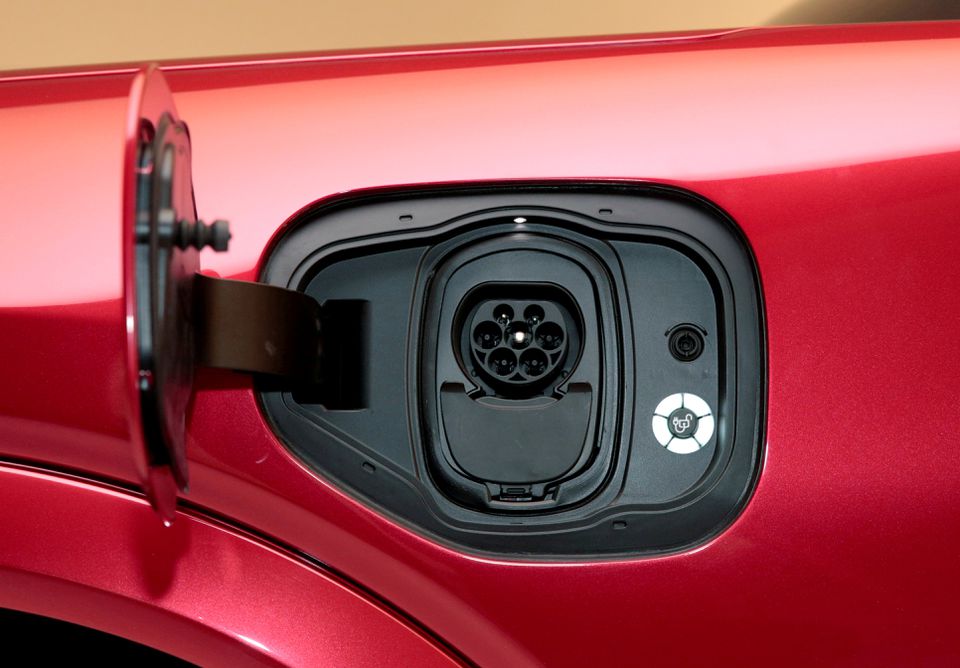President Joe Biden took a step toward his goal of slashing greenhouse gas emissions on Thursday with an executive order aimed at making half of all new vehicles sold in 2030 electric, a move made with backing from the biggest U.S. automakers.
The administration also proposed new vehicle emissions standards that would cut pollution through 2026, starting with a 10% stringency increase in the 2023 model year.
The actions are part of Biden’s broader plan to fight climate change, in this case by targeting emissions from cars and trucks, while working to make the United States an industry leader as China moves to dominate the electric vehicle market.
“The biggest thing that’s happening here is there’s a realization, on the part of both labor and business now, that this is the future. We can’t sit by,” Biden told reporters at the White House.
An environmental group, the Safe Climate Transport Campaign, said the White House did not go far enough and called automakers’ commitment to a non-binding target unreliable.
General Motors Co (GM.N), Ford Motor Co (F.N) and Chrysler parent Stellantis NV (STLA.MI) said in a joint statement they aspired “to achieve sales of 40-50% of annual U.S. volumes of electric vehicles … by 2030.” Reuters reported the planned automaker announcement on Tuesday. read more
The goals of both Biden and the automakers include battery electric, fuel cell and plug-in hybrid vehicles that also have a gasoline engine.
Biden has repeatedly resisted calls from many Democrats to set a binding requirement for EV adoption or to follow California and some countries in setting 2035 as a date to phase out the sale of new gasoline-powered light-duty vehicles in the face of opposition by the United Auto Workers (UAW) union.
UAW President Ray Curry, who attended the event, noted the EV goal but said the union was focused “on preserving the wages and benefits that have been the heart and soul of the American middle class.”
After signing the executive order on the South Lawn of the White House, Biden jumped into a waiting EV Jeep, which he proceeded to drive rapidly around the grounds.
MIXED REACTION
Dan Becker, director of the Safe Climate Transport Campaign, criticized the plan. “Voluntary pledges from auto companies make a New Year’s resolution to lose weight look like a legally binding contract,” he said.
General Motors Chief Executive Mary Barra and Ford CEO Jim Farley were among those in attendance.
Asked whether the White House did not invite Musk because Tesla is not a union shop, White House press secretary Jen Psaki said: “I’ll let you draw your own conclusion.”
The Detroit 3 automakers said the aggressive EV sales goals can only be met with billions of dollars in government incentives including consumer subsidies, EV charging networks as well as “investments in R&D, and incentives to expand the electric vehicle manufacturing and supply chains in the United States.”
Hyundai (005380.KS) said it supports the 2030 40-50% EV sales goal, while Nissan said it has a target that more than 40% of its U.S. vehicle sales by 2030 be EVs.
Meanwhile, U.S. regulators plan to propose revising former President Donald Trump’s March 2020 rollback of fuel economy standards to a 1.5% annual increase in efficiency through 2026.
Biden’s proposed rules, which cover 2023-2026, are expected to be similar in overall vehicle emissions reductions to California’s 2019 deal with some automakers aiming to improve fuel economy 3.7% annually through 2026, sources told Reuters.
BMW (BMWG.DE), Honda (7267.T), Volkswagen (VOWG_p.DE), Ford and Volvo Cars (0175.HK) – which previously struck the California deal – said in a joint statement they support the administration’s EV goal but the federal government must take “bold action … to build consumer demand.”
Biden has called for $174 billion in government spending to boost EVs, including $100 billion in consumer incentives. A bipartisan Senate infrastructure bill includes $7.5 billion for EV charging stations but nothing for new consumer incentives.











